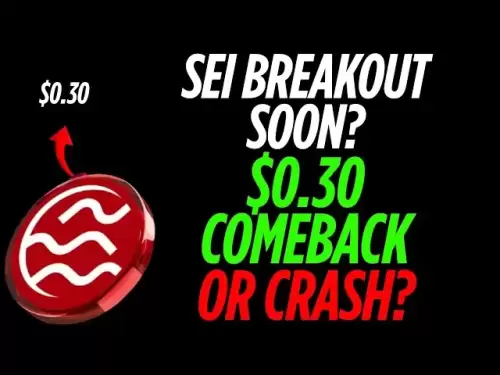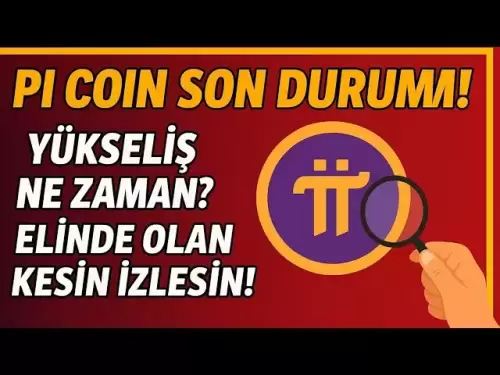-
 Bitcoin
Bitcoin $109,583.2239
0.19% -
 Ethereum
Ethereum $2,583.4612
0.48% -
 Tether USDt
Tether USDt $1.0003
-0.04% -
 XRP
XRP $2.2681
0.70% -
 BNB
BNB $659.9218
-0.52% -
 Solana
Solana $151.4961
-0.37% -
 USDC
USDC $0.9999
-0.02% -
 TRON
TRON $0.2861
1.20% -
 Dogecoin
Dogecoin $0.1718
0.04% -
 Cardano
Cardano $0.5960
-0.07% -
 Hyperliquid
Hyperliquid $40.1233
2.85% -
 Sui
Sui $2.9974
2.48% -
 Bitcoin Cash
Bitcoin Cash $497.1279
-1.76% -
 Chainlink
Chainlink $13.7275
-0.22% -
 UNUS SED LEO
UNUS SED LEO $9.0241
0.70% -
 Avalanche
Avalanche $18.5536
-0.88% -
 Stellar
Stellar $0.2421
1.39% -
 Toncoin
Toncoin $2.8593
-0.51% -
 Shiba Inu
Shiba Inu $0.0...01187
-0.07% -
 Litecoin
Litecoin $90.0023
2.90% -
 Hedera
Hedera $0.1590
2.79% -
 Monero
Monero $322.1495
0.00% -
 Polkadot
Polkadot $3.5453
-1.00% -
 Dai
Dai $1.0000
-0.01% -
 Bitget Token
Bitget Token $4.5733
-1.06% -
 Ethena USDe
Ethena USDe $1.0002
-0.01% -
 Uniswap
Uniswap $7.6345
3.03% -
 Aave
Aave $279.2583
0.47% -
 Pepe
Pepe $0.0...01003
-1.52% -
 Pi
Pi $0.4941
-0.32%
How to calculate ADA transaction fees? How to reduce transaction costs?
ADA transaction fees are calculated using the formula: fee = 0.0000431 * size + 0.155381 ADA, where size is in bytes. Consolidate UTXOs and batch transactions to reduce fees.
May 02, 2025 at 06:49 pm

Understanding ADA Transaction Fees
When transacting with Cardano (ADA), understanding the fee structure is crucial for managing costs effectively. ADA transaction fees are determined by two primary components: the transaction size and the minimum fee. The transaction size is measured in bytes, and the minimum fee ensures that even small transactions contribute to the network's operational costs. The formula to calculate the fee is straightforward: fee = a size + b, where 'a' and 'b' are constants set by the Cardano network.
Calculating ADA Transaction Fees
To calculate the exact fee for an ADA transaction, you need to know the current values of 'a' and 'b'. As of the latest update, 'a' is set to 0.0000431 ADA per byte, and 'b' is 0.155381 ADA. Here's how you can calculate the fee for a typical transaction:
- Determine the transaction size: This can vary depending on the complexity of the transaction. A simple transaction might be around 200 bytes, while more complex transactions could be larger.
- Apply the fee formula: Using the example of a 200-byte transaction, the fee would be calculated as follows: fee = 0.0000431 200 + 0.155381 = 0.163943 ADA.
Factors Affecting ADA Transaction Fees
Several factors can influence the size of your ADA transaction, and thus the fee you pay. The number of inputs and outputs in a transaction significantly affects its size. Each input and output adds to the transaction's byte count. Additionally, metadata can be included in transactions, which also increases the size and, consequently, the fee.
Strategies to Reduce ADA Transaction Fees
Reducing transaction costs on the Cardano network involves understanding and optimizing the factors that contribute to transaction size. Here are some practical strategies:
Consolidate UTXOs: Unspent Transaction Outputs (UTXOs) are the change from previous transactions. By consolidating multiple UTXOs into a single transaction, you can reduce the number of inputs in future transactions, thereby lowering the transaction size and fee.
Minimize Metadata: If your transaction does not require additional metadata, excluding it can help reduce the transaction size. Only include metadata when necessary.
Batch Transactions: When possible, combine multiple transactions into a single batch. This can be particularly effective for businesses or individuals who need to make multiple transfers at once.
Using Cardano Wallets to Optimize Fees
Many Cardano wallets offer features that help users manage and reduce transaction fees. Here's how you can use wallet functionalities to optimize your costs:
Select the Right Wallet: Choose a wallet that provides detailed fee estimates and allows you to adjust transaction parameters. Wallets like Daedalus and Yoroi offer these features.
Adjust Transaction Settings: Some wallets allow you to set a custom fee. While this requires a good understanding of the fee structure, it can help you balance between speed and cost.
Monitor Network Conditions: Keep an eye on the Cardano network's congestion levels. During peak times, transaction fees might be higher due to increased demand for block space.
Practical Steps to Reduce ADA Transaction Fees
To put these strategies into action, follow these steps:
Identify UTXOs: Use your wallet to view all your UTXOs. Look for opportunities to consolidate them.
Plan Your Transactions: If you have multiple transactions planned, consider batching them. This might involve waiting until you have several transactions ready to go.
Use Wallet Features: Navigate to the transaction settings in your wallet. If available, adjust the fee settings to find the optimal balance between speed and cost.
Review and Confirm: Before finalizing a transaction, review the fee estimate provided by your wallet. Ensure it aligns with your expectations and the strategies you've implemented.
Frequently Asked Questions
Q: Can I change the fee after I've sent a transaction on the Cardano network?
A: No, once a transaction is sent on the Cardano network, the fee cannot be altered. It's important to review and confirm the fee before sending the transaction.
Q: Does the time of day affect ADA transaction fees?
A: Generally, transaction fees on the Cardano network are not directly influenced by the time of day. However, during periods of high network activity, fees might increase due to increased demand for block space.
Q: Are there any tools or services that can help me estimate ADA transaction fees more accurately?
A: Yes, several online tools and calculators are available that can help estimate ADA transaction fees based on the current network parameters and transaction size. Additionally, many Cardano wallets provide built-in fee estimators.
Disclaimer:info@kdj.com
The information provided is not trading advice. kdj.com does not assume any responsibility for any investments made based on the information provided in this article. Cryptocurrencies are highly volatile and it is highly recommended that you invest with caution after thorough research!
If you believe that the content used on this website infringes your copyright, please contact us immediately (info@kdj.com) and we will delete it promptly.
- BONK Price Prediction: Meme Coin Mania and What's Next?
- 2025-07-04 12:30:13
- NYAG, Stablecoins, and FDIC Protections: Navigating the Regulatory Maze
- 2025-07-04 13:10:15
- Level Up Your DeFi Game: Phantom Wallet and the Ultimate DeFi Experience
- 2025-07-04 13:10:15
- Bitcoin Surge: Breaking Down the $109,000 Barrier and the Road to $165,000?
- 2025-07-04 12:30:13
- Solana ETF Inflows & Snorter Token: A New Era for Meme Coin Trading?
- 2025-07-04 12:50:12
- Ripple, Stablecoin, and First Bank: Decoding the Latest Moves in Crypto
- 2025-07-04 12:50:12
Related knowledge

How to customize USDT TRC20 mining fees? Flexible adjustment tutorial
Jun 13,2025 at 01:42am
Understanding USDT TRC20 Mining FeesMining fees on the TRON (TRC20) network are essential for processing transactions. Unlike Bitcoin or Ethereum, where miners directly validate transactions, TRON uses a delegated proof-of-stake (DPoS) mechanism. However, users still need to pay bandwidth and energy fees, which are collectively referred to as 'mining fe...

USDT TRC20 transaction is stuck? Solution summary
Jun 14,2025 at 11:15pm
Understanding USDT TRC20 TransactionsWhen users mention that a USDT TRC20 transaction is stuck, they typically refer to a situation where the transfer of Tether (USDT) on the TRON blockchain has not been confirmed for an extended period. This issue may arise due to various reasons such as network congestion, insufficient transaction fees, or wallet-rela...

How to cancel USDT TRC20 unconfirmed transactions? Operation guide
Jun 13,2025 at 11:01pm
Understanding USDT TRC20 Unconfirmed TransactionsWhen dealing with USDT TRC20 transactions, it’s crucial to understand what an unconfirmed transaction means. An unconfirmed transaction is one that has been broadcasted to the blockchain network but hasn’t yet been included in a block. This typically occurs due to low transaction fees or network congestio...

How to check USDT TRC20 balance? Introduction to multiple query methods
Jun 21,2025 at 02:42am
Understanding USDT TRC20 and Its ImportanceUSDT (Tether) is one of the most widely used stablecoins in the cryptocurrency market. It exists on multiple blockchain networks, including TRC20, which operates on the Tron (TRX) network. Checking your USDT TRC20 balance accurately is crucial for users who hold or transact with this asset. Whether you're sendi...

What to do if USDT TRC20 transfers are congested? Speed up trading skills
Jun 13,2025 at 09:56am
Understanding USDT TRC20 Transfer CongestionWhen transferring USDT TRC20, users may occasionally experience delays or congestion. This typically occurs due to network overload on the TRON blockchain, which hosts the TRC20 version of Tether. Unlike the ERC20 variant (which runs on Ethereum), TRC20 transactions are generally faster and cheaper, but during...

The relationship between USDT TRC20 and TRON chain: technical background analysis
Jun 12,2025 at 01:28pm
What is USDT TRC20?USDT TRC20 refers to the Tether (USDT) token issued on the TRON blockchain using the TRC-20 standard. Unlike the more commonly known ERC-20 version of USDT (which runs on Ethereum), the TRC-20 variant leverages the TRON network's infrastructure for faster and cheaper transactions. The emergence of this version came as part of Tether’s...

How to customize USDT TRC20 mining fees? Flexible adjustment tutorial
Jun 13,2025 at 01:42am
Understanding USDT TRC20 Mining FeesMining fees on the TRON (TRC20) network are essential for processing transactions. Unlike Bitcoin or Ethereum, where miners directly validate transactions, TRON uses a delegated proof-of-stake (DPoS) mechanism. However, users still need to pay bandwidth and energy fees, which are collectively referred to as 'mining fe...

USDT TRC20 transaction is stuck? Solution summary
Jun 14,2025 at 11:15pm
Understanding USDT TRC20 TransactionsWhen users mention that a USDT TRC20 transaction is stuck, they typically refer to a situation where the transfer of Tether (USDT) on the TRON blockchain has not been confirmed for an extended period. This issue may arise due to various reasons such as network congestion, insufficient transaction fees, or wallet-rela...

How to cancel USDT TRC20 unconfirmed transactions? Operation guide
Jun 13,2025 at 11:01pm
Understanding USDT TRC20 Unconfirmed TransactionsWhen dealing with USDT TRC20 transactions, it’s crucial to understand what an unconfirmed transaction means. An unconfirmed transaction is one that has been broadcasted to the blockchain network but hasn’t yet been included in a block. This typically occurs due to low transaction fees or network congestio...

How to check USDT TRC20 balance? Introduction to multiple query methods
Jun 21,2025 at 02:42am
Understanding USDT TRC20 and Its ImportanceUSDT (Tether) is one of the most widely used stablecoins in the cryptocurrency market. It exists on multiple blockchain networks, including TRC20, which operates on the Tron (TRX) network. Checking your USDT TRC20 balance accurately is crucial for users who hold or transact with this asset. Whether you're sendi...

What to do if USDT TRC20 transfers are congested? Speed up trading skills
Jun 13,2025 at 09:56am
Understanding USDT TRC20 Transfer CongestionWhen transferring USDT TRC20, users may occasionally experience delays or congestion. This typically occurs due to network overload on the TRON blockchain, which hosts the TRC20 version of Tether. Unlike the ERC20 variant (which runs on Ethereum), TRC20 transactions are generally faster and cheaper, but during...

The relationship between USDT TRC20 and TRON chain: technical background analysis
Jun 12,2025 at 01:28pm
What is USDT TRC20?USDT TRC20 refers to the Tether (USDT) token issued on the TRON blockchain using the TRC-20 standard. Unlike the more commonly known ERC-20 version of USDT (which runs on Ethereum), the TRC-20 variant leverages the TRON network's infrastructure for faster and cheaper transactions. The emergence of this version came as part of Tether’s...
See all articles

























































































